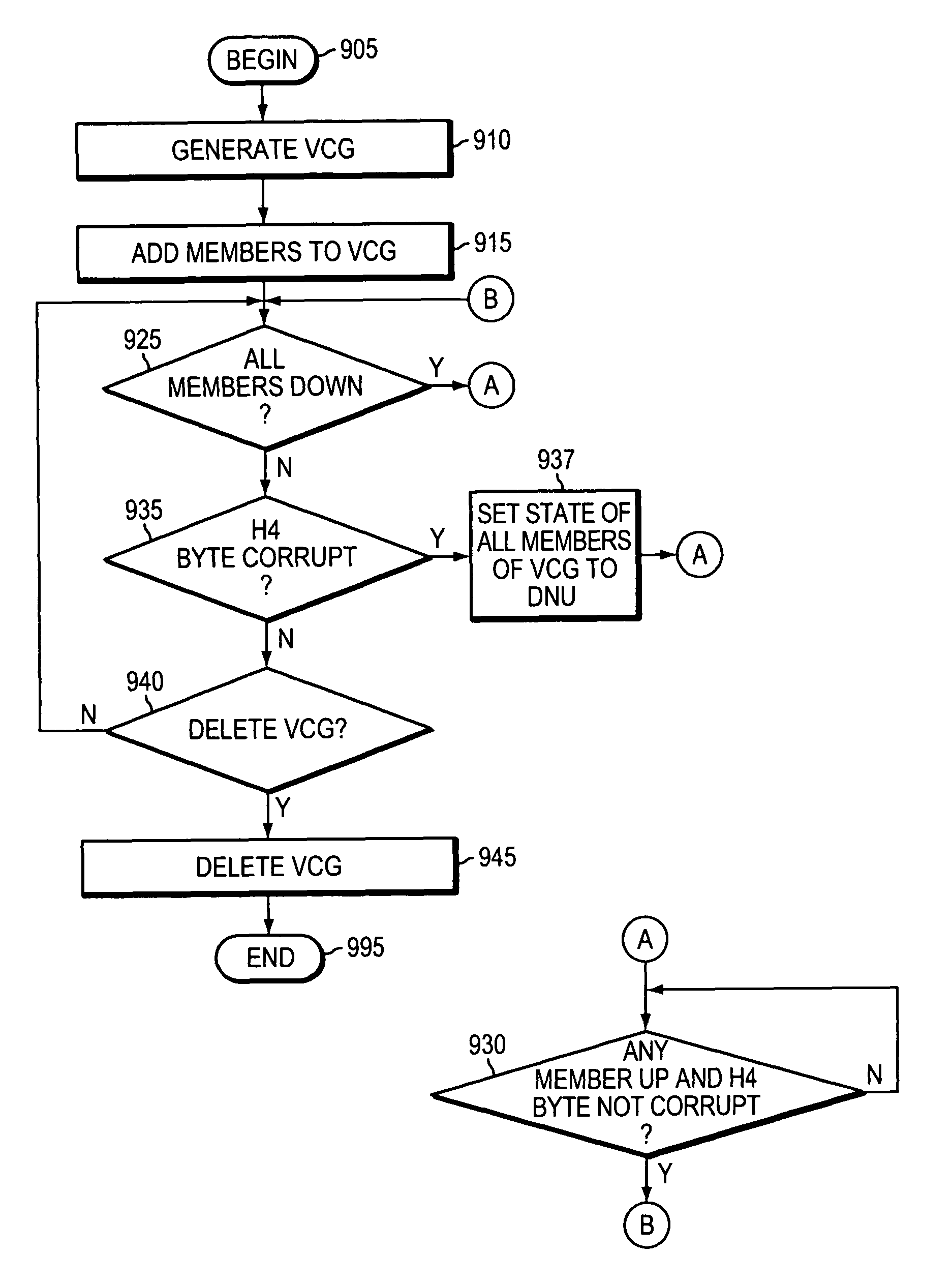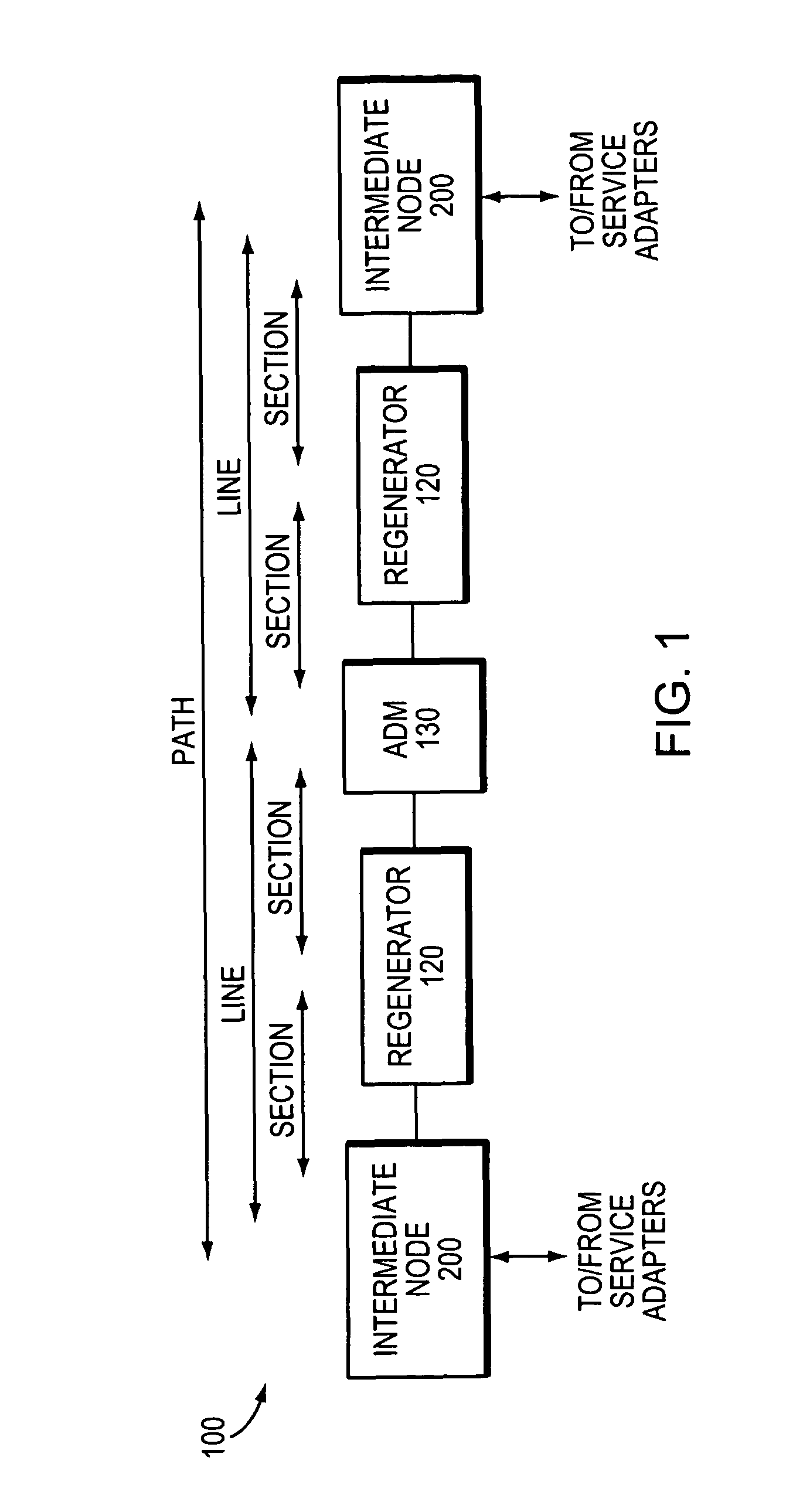Method and apparatus for enabling LCAS-like feature through embedded software
a technology of embedded software and software, applied in the field of data networks, can solve the problems of hardware availability, inability to provide lcas support to its customers on the high-speed network, and hardware replacement in the network,
- Summary
- Abstract
- Description
- Claims
- Application Information
AI Technical Summary
Benefits of technology
Problems solved by technology
Method used
Image
Examples
Embodiment Construction
[0031]FIG. 1 is a schematic block diagram of an exemplary Synchronous Optical Network (SONET) data network 100 that may be advantageously used with the present invention. Network 100 comprises a collection of nodes interconnected via communication links. The communication links may comprise optical links configured to carry SONET data in a point-to-point manner between the nodes. The SONET data is associated with various optical interface layers including a section layer, line layer and path layer. The optical interface layers have a hierarchical relationship, where each layer builds on services provided by the next lower layer. Each layer communicates to peer equipment at the same layer and processes information that is passed up or down to the next layer.
[0032]The intermediate nodes 200 are illustratively path terminating equipment (PTE) of a SONET path where one node is a source intermediate node 200 at the source end (So) of the path and the other node is a destination intermedi...
PUM
 Login to View More
Login to View More Abstract
Description
Claims
Application Information
 Login to View More
Login to View More - R&D
- Intellectual Property
- Life Sciences
- Materials
- Tech Scout
- Unparalleled Data Quality
- Higher Quality Content
- 60% Fewer Hallucinations
Browse by: Latest US Patents, China's latest patents, Technical Efficacy Thesaurus, Application Domain, Technology Topic, Popular Technical Reports.
© 2025 PatSnap. All rights reserved.Legal|Privacy policy|Modern Slavery Act Transparency Statement|Sitemap|About US| Contact US: help@patsnap.com



